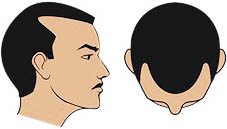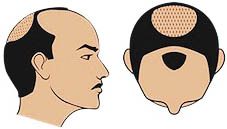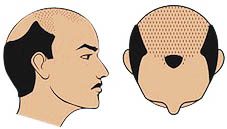Starting With Realistic Hair Goals
Starting With Realistic Hair Goals
Hair transplant candidates are individuals with significant hair loss, thinning hair, or bald spots due to genes, hormones, or medical issues. The main aim is to bring back natural-looking hair where it’s lost or sparse on the scalp.
Getting a hair transplant can give you a younger, more natural look, which might boost your confidence and quality of life. It’s key to consult an experienced specialist who can understand your needs and give personalized advice.
Reasons for a hair transplant:
Genetic Hair Loss
Common genetic conditions like male-pattern baldness or female-pattern hair thinning can make you a good candidate for a transplant. It helps grow hair in bald or thinning spots.
Trauma-Related Hair Loss
Burns or injuries can make you lose hair. Transplants can help grow hair back in those areas. Also, scarring alopecia from skin issues, burns, or injury can be treated with surgery.
Traction Alopecia
Tight hairstyles like braids can damage hair follicles. A transplant can replace lost hair.
Previous Surgeries
Surgeries like facelifts may cause hair loss. A transplant can restore lost hair. Also, if standard treatments didn’t work, a transplant might help.
Aesthetic Reasons
Some want thicker hair for looks. A transplant can help with that.
Deciding on a hair transplant is personal. Consult a qualified surgeon to discuss your needs. They’ll check your health and hair to see if you’re a good fit for the procedure.
Class 2 Hair Loss

Hairline moves back from the temples up. Temples recede more, forming a frontal tuft.
Class 3 Hair Loss

Hair loss on the crown with deepening temple recession and possible crown hair loss or thinning.
Class 4 Hair Loss

More frontal hair loss, bigger crown, with a solid hair bridge between the two balding areas.
Class 5 Hair Loss

Significant hair loss, with a small tuft remaining in front. The bridge starts to split, and the bald crown gets bigger.
Class 6 Hair Loss

The hair bridge vanishes, leaving a large bald spot. Temples recede, but sides above ears and around the crown stay high.
Class 2 Hair Loss

Hairline moves back from the temples up. Temples recede more, forming a frontal tuft.
Class 3 Hair Loss

Hair loss on the crown with deepening temple recession and possible crown hair loss or thinning.
Class 4 Hair Loss

More frontal hair loss, bigger crown, with a solid hair bridge between the two balding areas.
Class 5 Hair Loss

Significant hair loss, with a small tuft remaining in front. The bridge starts to split, and the bald crown gets bigger.
Class 6 Hair Loss

The hair bridge vanishes, leaving a large bald spot. Temples recede, but sides above ears and around the crown stay high.
World Renown Surgeons
Find a Location
We are committed to being on the leading edge of advances in hair restoration technology at the lowest cost to ensure that our patients can financially afford to achieve their desired goal of full, natural-looking hair and the confidence achieved along with that.
World Renown Surgeons
Find a Location
We are committed to being on the leading edge of advances in hair restoration technology at the lowest cost to ensure that our patients can financially afford to achieve their desired goal of full, natural-looking hair and the confidence achieved along with that.
